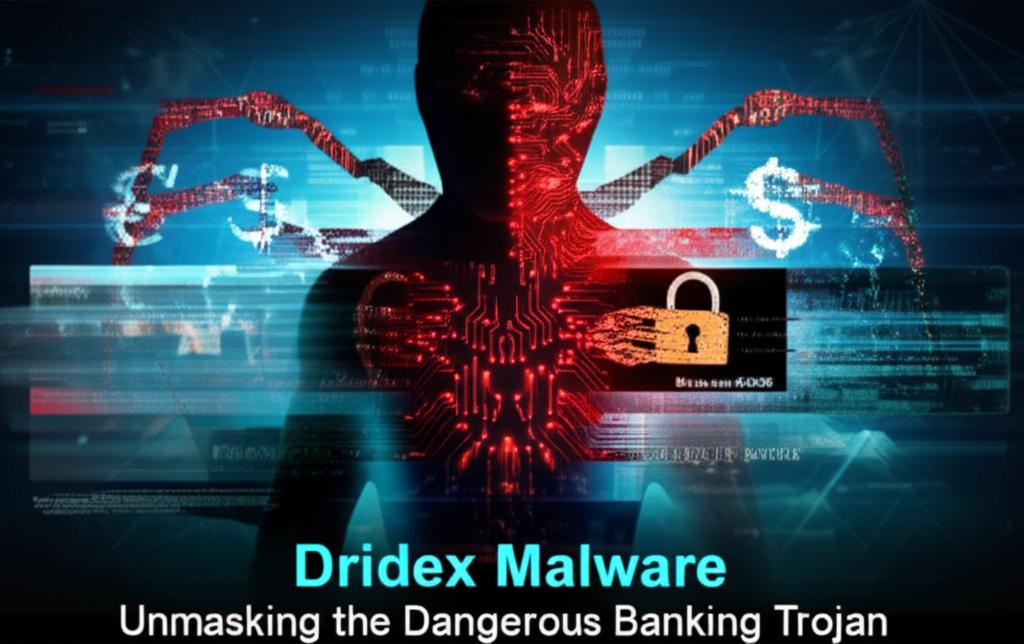Dridex Malware: Unmasking the Dangerous Banking Trojan
Dridex Malware stands as one of the most insidious and persistent threats in the cyber landscape. This sophisticated banking trojan has been a thorn in the side of financial institutions and individual users for years, evolving its tactics to bypass robust security measures. Understanding Dridex Malware is crucial for anyone navigating the digital world, as its primary goal is to steal sensitive financial information.
What is Dridex Malware?
At its core, Dridex Malware is a modular banking Trojan designed to siphon banking credentials and other financial data from infected systems. It originated as a successor to the notorious Gameover ZeuS trojan, inheriting and improving upon its predecessors’ capabilities. Dridex is not just a simple virus; it’s a complex piece of malware capable of a wide range of malicious activities, primarily focusing on financial fraud.
How Does Dridex Malware Operate?
Dridex employs several sophisticated methods to infect systems and achieve its objectives:
Delivery Mechanisms:
- Phishing Emails: The most common vector. Users receive seemingly legitimate emails (e.g., fake invoices, shipping notifications, financial statements) containing malicious attachments (often Word or Excel documents with macros) or links to compromised websites.
- Exploit Kits: Less common now, but historically, Dridex has leveraged exploit kits to take advantage of software vulnerabilities on unpatched systems.
- Drive-by Downloads: Visiting a compromised website can silently install the malware without user interaction.
Infection Process:
- Once a user opens a malicious attachment or clicks a harmful link, the Dridex payload is downloaded and executed.
- It often uses obfuscation techniques and anti-analysis measures to evade detection by antivirus software.
- The malware establishes persistence on the system, ensuring it restarts with the operating system.
Functionality and Data Theft:
- Web Injects: Dridex primarily uses web injects to modify legitimate banking websites as they appear in the user’s browser. This allows it to display fake login forms or request additional sensitive information (like PINs, one-time passwords, or security questions) directly on the banking site, which is then captured by the attackers.
- Keylogging: It can record keystrokes, capturing passwords, credit card numbers, and other typed data.
- Screenshotting: Dridex can take screenshots of the user’s screen, especially during banking sessions.
- Remote Access: Some versions allow attackers to gain remote control over the infected machine.
- Peer-to-Peer (P2P) Network: Dridex often uses a P2P command-and-control (C2) infrastructure, making it resilient to takedowns, as there’s no single point of failure.
The Dangerous Impact of Dridex:
The consequences of a Dridex infection can be devastating for both individuals and organizations:
- Financial Loss: Direct theft of funds from bank accounts, unauthorized credit card transactions.
- Identity Theft: Stolen credentials can lead to broader identity theft.
- Reputational Damage: For businesses, a Dridex breach can severely damage customer trust and brand reputation.
- Operational Disruption: Remediation efforts can be costly and disruptive.
Protecting Against Dridex Malware:
Mitigating the threat of Dridex Malware requires a multi-layered security approach:
- Vigilance Against Phishing: Be extremely cautious with unsolicited emails. Verify the sender, look for suspicious links, and avoid opening unexpected attachments, especially those requesting to enable macros.
- Software Updates: Keep your operating system, web browsers, and all software up to date to patch known vulnerabilities that Dridex could exploit.
- Robust Antivirus/Anti-Malware: Use reputable security software and ensure it’s always active and updated.
- Strong, Unique Passwords & MFA: Employ strong, unique passwords for all accounts, especially banking and email. Enable Multi-Factor Authentication (MFA) wherever possible.
- Network Security: Implement firewalls and intrusion detection/prevention systems. For organizations, consider email filtering solutions that can detect malicious attachments and links.
- Data Backup: Regularly back up important data to an offline or secure cloud location.
- User Education: Educate employees and users about the risks of phishing and safe browsing habits.
Conclusion:
Dridex Malware remains a significant and evolving threat in the cybersecurity landscape. Its sophisticated techniques for financial fraud necessitate a proactive and comprehensive defense strategy. By understanding how Dridex operates and implementing robust security practices, individuals and organizations can significantly reduce their risk of falling victim to this dangerous banking trojan. Stay informed, stay vigilant, and protect your digital assets.







